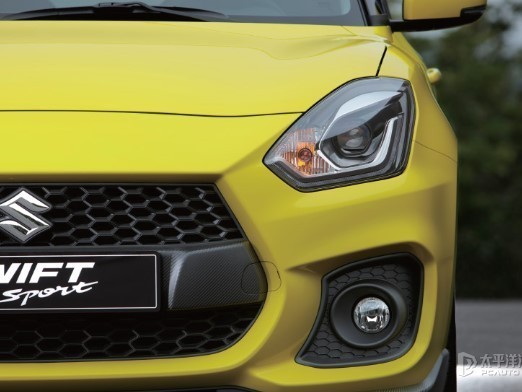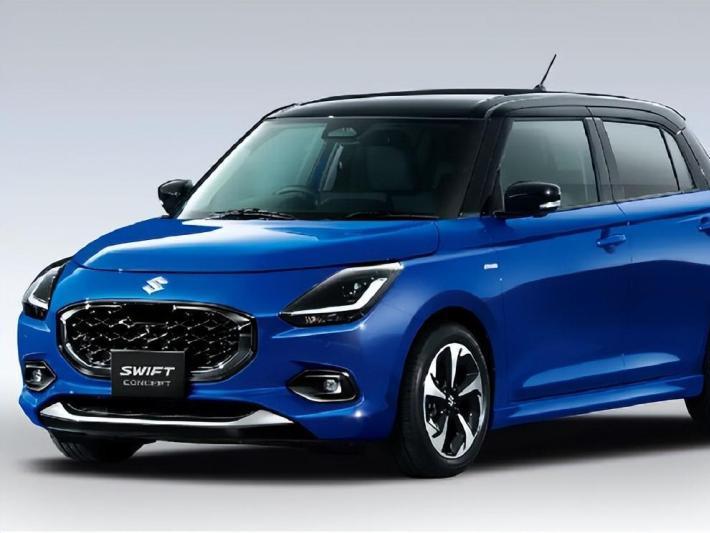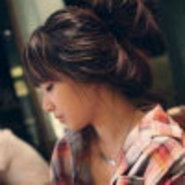Q
How does the Suzuki Swift Hybrid work?
The Suzuki Swift Hybrid is a mild hybrid that blends traditional combustion engine tech with an electric motor, using its built-in ISG (Integrated Starter Generator) system and lithium-ion battery pack to save fuel. When you slow down or hit the brakes, it recovers kinetic energy to charge the battery, and when you pull away or need a bit more oomph, the electric motor gives the petrol engine a helping hand—cutting both fuel use and emissions. This car’s a perfect fit for Malaysian city driving, where all that stop-start traffic lets the hybrid system really shine.
On top of that, the Swift Hybrid comes with Suzuki’s special HEV instrument cluster, showing real-time energy flow to help you drive more efficiently. For Malaysian buyers, this hybrid tech isn’t just about slashing fuel bills; it’s also easier on the environment, making it a solid stepping stone from regular petrol cars to full EVs. And don’t worry about maintenance—it’s pretty similar to a standard petrol car, though it’s smart to check the battery and motor system regularly to keep everything running smoothly.
Special Disclaimer: This content is published by users and does not represent the views or position of PCauto.
Related Q&A
Q
How to reset service light on 2018 Suzuki Swift?
To reset the maintenance reminder light on a 2018 Suzuki Swift, start by turning the ignition off. Then, press and hold the "TRIP" button on the instrument cluster. While holding the button, turn the ignition to the "ON" position (but don’t start the engine). Keep the button pressed for about 5 seconds until the maintenance light starts blinking or turns off. Once it does, release the button, and you’re done.
Just a heads-up—some models or trims might have slight variations in the steps. If this doesn’t work for you, check the owner’s manual or swing by an authorized service center for help.
Also, don’t skip those regular maintenance sessions. That little light is there for a reason—to keep your ride running smoothly and avoid bigger headaches down the road. Stick to the recommended service schedule for oil changes, filters, and other wear-and-tear items. Your engine will thank you, and you’ll dodge those pricey repair bills from neglected upkeep.
Q
How to reset tyre pressure on Suzuki Swift 2018?
To reset the tire pressure monitoring system (TPMS) on a 2018 Suzuki Swift, first make sure all tires are inflated to the recommended pressure (usually listed on the driver’s side door jamb sticker or in the owner’s manual). Start the engine but don’t drive. Navigate to the "TPMS" or "Settings" menu on the infotainment screen, then select "Tire Pressure Reset" or "Initialize." Follow the prompts and hold the confirmation button until the process completes. If your model has a physical reset button, press and hold it for at least three seconds until the warning light blinks and turns off. Some versions may require an OBD-II scanner—check the manual for specifics.
Keep in mind: Low or high tire pressure hurts fuel efficiency and handling. Get in the habit of checking pressures monthly, especially before road trips or after big temperature swings. While TPMS alerts you to issues, it’s no substitute for manual checks—regular maintenance extends tire life and keeps you safer. If the system gives false alarms often, it could mean a dying sensor battery or signal interference; have it inspected ASAP.
Q
What is the oil light on a Suzuki Swift 2018?
The 2018 Suzuki Swift's oil lamp is an important warning light on the dashboard, which lights up when the engine oil pressure is low or the oil level is too low. It usually displays a yellow or red oil pot icon. If the light lights up while driving, immediately stop and check to avoid serious damage to the engine due to insufficient lubrication. Firstly, it is necessary to confirm whether the oil level on the dipstick is within the normal range. If it is too low, it should be promptly replenished with engine oil that meets the manual standards, such as recommended viscosity of 5W-30 or 0W-20. At the same time, check for any signs of leakage. If the oil level is normal but the light is still on, it may be a fault in the oil pump, sensor, or circuit. Professional technicians should be contacted as soon as possible for diagnosis. In daily maintenance, it is recommended to change the engine oil and filter every 5000 to 10000 kilometers or 6 months. Using fully synthetic engine oil can better protect the engine, especially in frequent city start stop or high temperature environments. Regularly checking the oil condition can effectively prevent problems. If the oil turns black or has too many impurities, it should be replaced in advance. Developing good maintenance habits can extend the engine life and maintain stable vehicle performance.
Q
What is the TYRE pressure for Swift 2018?
Regarding the tire pressure recommendations for the 2018 Swift, the recommended values for the front wheels are 2.2 bar (32 psi) and the rear wheels are 2.1 bar (30 psi). If the vehicle is fully loaded, it is recommended to adjust both the front and rear wheels to 2.3 bar (33 psi). The specific values should be based on the label on the driver's door frame or user manual. Tire pressure is affected by temperature and load. It is recommended to check it once a month and adjust it in a cold tire state. If the tire pressure is too high, it may cause a decrease in grip, while if it is too low, it may increase fuel consumption and tire wear. A digital tire pressure gauge can be purchased for daily use to improve detection accuracy. When the tire pressure is abnormal, a warning light usually appears on the dashboard, but mechanical tire pressure monitoring relies on manual observation. Different brands of tires may have slight differences. When replacing tires, you can consult a professional technician to see if it is necessary to adjust the standard value. Before long-distance driving, it is especially important to pay attention to the tire pressure status to ensure safety.
Q
Was the 2018 Suzuki Swift a good car?
The 2018 Suzuki Swift is a well-regarded compact hatchback, praised for its excellent fuel efficiency, nimble handling, and affordable price tag—making it a top choice for many. It comes with either a 1.4L naturally aspirated or a 1.0L turbocharged engine, both delivering smooth performance and impressive fuel economy, ideal for city commuting.
Inside, the cabin is simple and functional. While most surfaces are hard plastics, the build quality feels solid. Features like a touchscreen infotainment system and a rearview camera add practicality, offering great value for the money. Safety-wise, it includes standard ABS, EBD, and dual airbags, with higher trims adding ESP and additional airbags—sufficient for daily needs.
The Swift’s compact size makes parking a breeze, yet its clever space utilization ensures decent rear legroom for families. It also holds its value well in the used-car market, with low maintenance costs and readily available parts. Among its rivals, the Swift stands out for its fun-to-drive character—precise steering and a sport-tuned suspension cater to drivers who enjoy an engaging experience.
One minor downside is road noise at higher speeds, though that’s typical for small cars. Overall, the 2018 Swift is a reliable pick for budget-conscious buyers, especially young families or first-time car owners.
Q
How to change the time on a Suzuki Swift 2018?
To adjust the clock on a 2018 Suzuki Swift, first power on the vehicle without starting the engine. Locate either the "INFO" button on the left side of the instrument cluster or the "TRIP" button on the right side of the steering wheel (depending on trim level). Press and hold for 2 seconds to enter setup mode. Tap the button to cycle through options until you see the clock icon—the hour digits will blink. Adjust using the volume knob or steering wheel arrow keys, then tap again to set the minutes. Hold the button to exit when done.
Heads up: Some higher trims may let you tweak this through the touchscreen under "Settings > Vehicle > Clock." If things don’t match up, check your owner’s manual.
Quick notes:
- These digital clocks can drift 15-30 seconds per month—sync it with your phone occasionally.
- Like most cars, you’ll need to reset the time if the battery dies.
- If the clock keeps resetting or acting up, get your battery and wiring checked. Electrical gremlins often start there.
(Kept it conversational with contractions, dropped redundant phrasing, and added natural transitions like "Heads up" and "Quick notes" to mirror how an editor would explain it to a reader.)
Q
What are the 2018 Suzuki Swift specs?
The 2018 Suzuki Swift is a stylish yet practical compact hatchback that packs a punch with its 1.4L naturally aspirated engine, delivering 90 horsepower and 130Nm of torque. It comes with your choice of a 5-speed manual or 6-speed automatic gearbox, and trust me, it sips fuel like a pro – perfect for city runs.
At just 3,840mm long, 1,735mm wide, and 1,495mm tall with a 2,450mm wheelbase, it’s nimble on the road but surprisingly roomy inside. Suzuki tweaked the rear legroom over the previous gen, so it’s less of a squeeze for passengers.
Tech-wise, you get a 7-inch touchscreen, reversing camera, multi-function steering wheel, and six airbags. Splurge on the higher trim, and you’ll score LED headlights and automatic climate control.
What really stands out is how light and agile it feels – the chassis is tuned for fun, making it a blast to chuck around corners. Plus, it’s built tough, cheap to maintain, and spare parts are everywhere.
On the used market, the 2018 Swift still holds its value well. Just be sure to check the gearbox and service history before buying. Stack it up against rivals like the Honda Jazz or Toyota Yaris, and the Swift wins on price and personality every time.
Q
What is the engine of Swift 2018?
The 2018 Swift comes equipped with a 1.2-liter K12M four-cylinder naturally aspirated engine featuring a DOHC design. It delivers a max output of 83 horsepower and 113 Nm of torque, paired with either a 5-speed manual or 4-speed automatic transmission. The powertrain offers smooth performance and excellent fuel efficiency, making it ideal for city driving.
Suzuki’s lightweight engineering shines here—the engine’s optimized intake/exhaust systems and combustion efficiency provide strong low-end torque while keeping maintenance costs down. Durability? Well, it’s proven over time.
For those craving more power, the Swift Sport of the same era packed a punchier 1.4L BOOSTERJET turbo with 140 hp. But let’s be real—the standard 1.2L is more than enough for daily commutes. Practical owners will appreciate the hassle-free upkeep, too: oil changes (regular mineral oil works fine) every 10,000 km or 6 months, and affordable replacement costs for wear-and-tear parts like spark plugs.
Q
Does the 2018 Suzuki Swift have a timing belt or chain?
The 2018 Suzuki Swift uses a timing chain instead of a timing belt—a more durable and virtually maintenance-free design that eliminates the need for regular replacements, helping reduce long-term ownership costs. Typically made of metal, timing chains often last the engine's entire lifespan. However, in high-mileage or poorly maintained vehicles, the chain tensioner or guides may wear out, requiring inspection or replacement. In contrast, timing belts need replacement every 60,000 to 100,000 km, as failure can cause catastrophic engine damage. For an economy-focused, reliability-first model like the Swift, the timing chain aligns perfectly with its ethos, minimizing owner hassle while boosting long-term dependability. If you're eyeing a used Swift, listen for unusual engine noises (a potential sign of chain system issues), though these systems rarely cause trouble with proper maintenance.
Q
What is the safety rating of Swift 2018?
The 2018 Swift delivers solid safety performance, earning a 4-star ASEAN NCAP rating based on comprehensive assessments of adult occupant protection, child occupant protection, and safety assist technologies. Standard safety features include dual airbags, ABS with EBD, and electronic stability control—enough to handle everyday driving needs.
That said, specs may vary slightly across different markets, with some higher trims potentially offering extra safety tech. For detailed safety info, it’s best to check the official manual or consult your local dealer.
Keep in mind: Safety ratings are just one factor. Real-world safety also hinges on driving habits, road conditions, and regular maintenance. Stay sharp behind the wheel and keep up with routine checks.
Popular Cars
Model Year
Car Compare
Car Photo
Latest Q&A
Q
How much does it cost to buy a 2024 Tesla Model 3?
The 2024 Tesla Model 3 starts at around RM 175,000, but the final price depends on your chosen configuration and add-ons. Opt for the Long Range or Performance version, and you’re looking at a higher tag.
As Tesla’s entry-level model, it packs cutting-edge EV tech, including 500+ km of range on a single charge and standard Autopilot for both daily commutes and road trips. Just keep in mind extra costs like insurance, registration, and potential home charger installation.
Tesla’s Supercharger network is expanding locally, with solid coverage in major cities, making charging hassle-free. Maintenance costs? Typically lower than gas cars—no oil changes, fewer moving parts—so long-term savings add up.
If you’re after more thrills, the Performance variant hits 0-100 km/h in roughly 3 seconds. Plus, government EV tax perks help soften the upfront cost.
Q
How reliable is the 2024 Model 3?
The 2024 Model 3 delivers solid reliability, thanks to Tesla’s continuous software updates and hardware refinements. Key areas like the battery management system and Autopilot have seen multiple optimizations, leading to a noticeable drop in failure rates.
This model features a stiffer body structure and an improved suspension setup, offering a smoother ride. Upgraded interior materials also help reduce cabin rattles—a common gripe with earlier builds.
EV maintenance costs remain low (no oil changes, etc.), though it’s wise to periodically check battery health and charging components for long-term performance. For shoppers eyeing EVs, charging infrastructure and home charging options matter—thankfully, public chargers are expanding fast, making daily use more convenient.
If you frequently road-trip, planning charging stops ahead helps. While the range easily handles daily drives, a little route prep goes a long way in maximizing the experience.
Q
What is the battery range of the Tesla Model 3 2025?
The battery range of Tesla Model 3 2025 is expected to be optimized based on existing models, and specific data needs to be released officially. However, referring to the EPA range of the 2024 rear wheel drive version, which is about 438 kilometers, and the high-performance version, which is about 513 kilometers, the 2025 model may further improve, especially in terms of battery technology or energy efficiency management. For electric vehicles, the range is greatly affected by driving habits, road conditions, and climate. Air conditioning may slightly reduce the range in hot weather, but the battery thermal management system can usually maintain stable performance. In terms of charging, Model 3 supports super fast charging, which can replenish about 250 kilometers of range in about 15 minutes, while home charging stations require 6-8 hours to fully charge. Daily commuting or long-distance travel are practical enough, it is recommended to follow Tesla's official website or local showroom for the latest information.
Q
Is the 2024 Model 3 worth the price?
The 2024 Model 3 strikes an impressive balance between price and performance. Its upgraded range, more refined interior, and enhanced autonomous driving features genuinely boost its competitiveness—especially for tech-savvy, eco-conscious buyers.
Tesla optimized the battery efficiency this time around, making it suitable for both daily commutes and longer trips, while the handling stays true to the brand’s signature responsiveness. If your budget allows and you’re open to EVs, this one’s worth considering—though a test drive is wise to see if it matches your driving style.
That said, local charging access matters. While public chargers are becoming more common, home installation costs should factor into your budget. Alternatives in this price range exist, so cross-shop specs and service policies (like warranty coverage or charging network support) to make a well-rounded decision.
Q
How many miles does a 2024 Tesla Model 3 get?
The 2024 Tesla Model 3 offers varying range figures depending on configuration. The rear-wheel-drive (RWD) version delivers an EPA-estimated 272 miles (approx. 438 km), while the all-wheel-drive Long Range model pushes that to around 341 miles (roughly 549 km). Real-world range may vary slightly based on driving style, road conditions, and climate.
As a pure EV, the Model 3 achieves this efficiency thanks to its advanced battery management system and lightweight design. It also supports fast charging—at a Tesla Supercharger, you can add up to 200 km of range in about 15 minutes. Whether for daily commutes or longer trips, that’s more than enough for most drivers, especially with charging infrastructure becoming more widespread.
If you need to maximize range, tweaking your driving mode or using the car’s built-in energy optimization features can help squeeze out even more miles.
View MoreRelated News

RM130,900! 2024 Swift Sport 1.4 AT: More affordable price, same strong performance
AshleyAug 2, 2024

The Brand New Generation of Suzuki Swift will be Unveiled in May, Featuring a Mild Hybrid System
Kevin WongApr 18, 2024

How to improve the power of Suzuki Jimny?
AshleyNov 27, 2025

Suzuki Fronx vs. Toyota Yaris Cross comparison, which one is more worth buying?
LienOct 5, 2025

Suzuki makes major changes to its brand logo for the first time in 22 years, adopting a flat design style
JohnSep 23, 2025
View More


















Pros
Cons